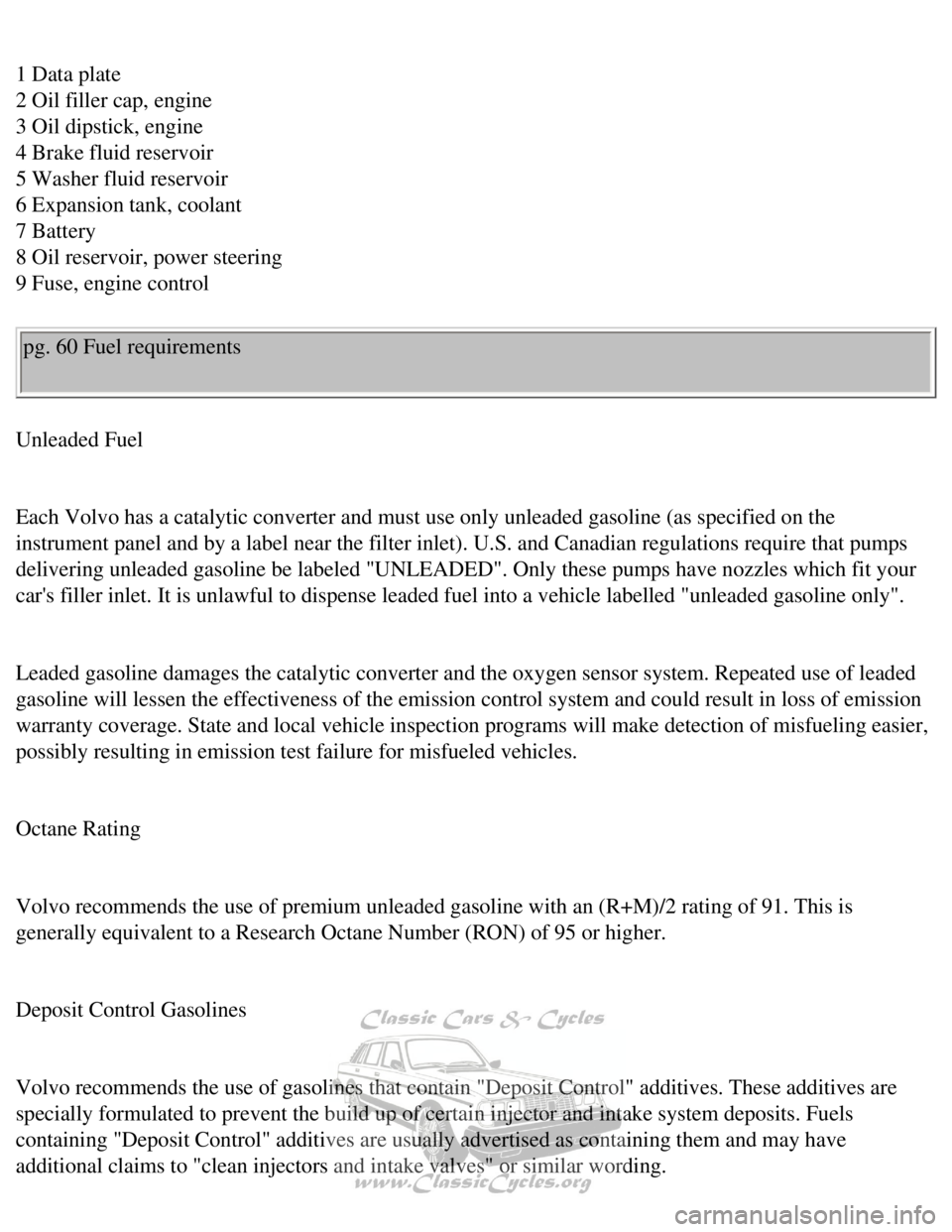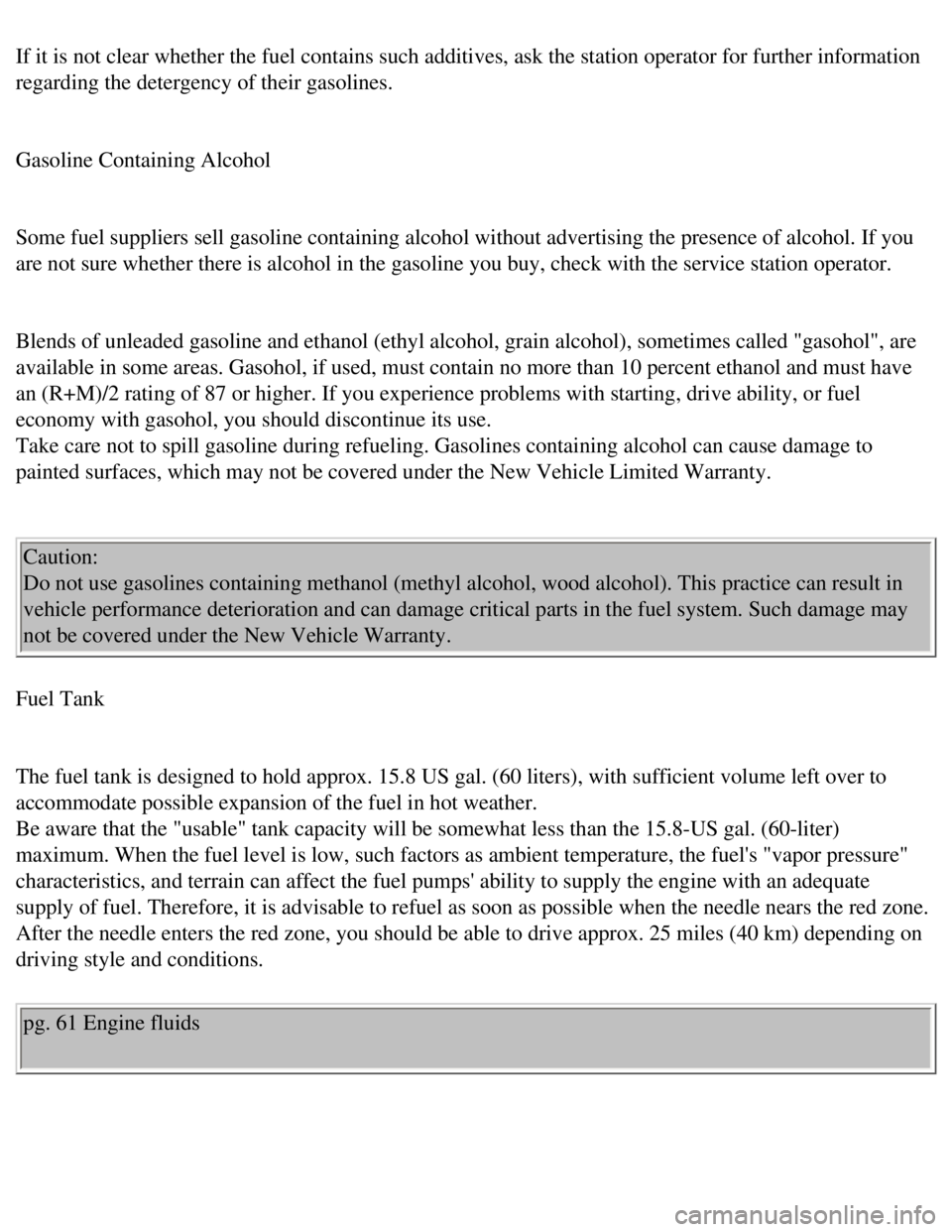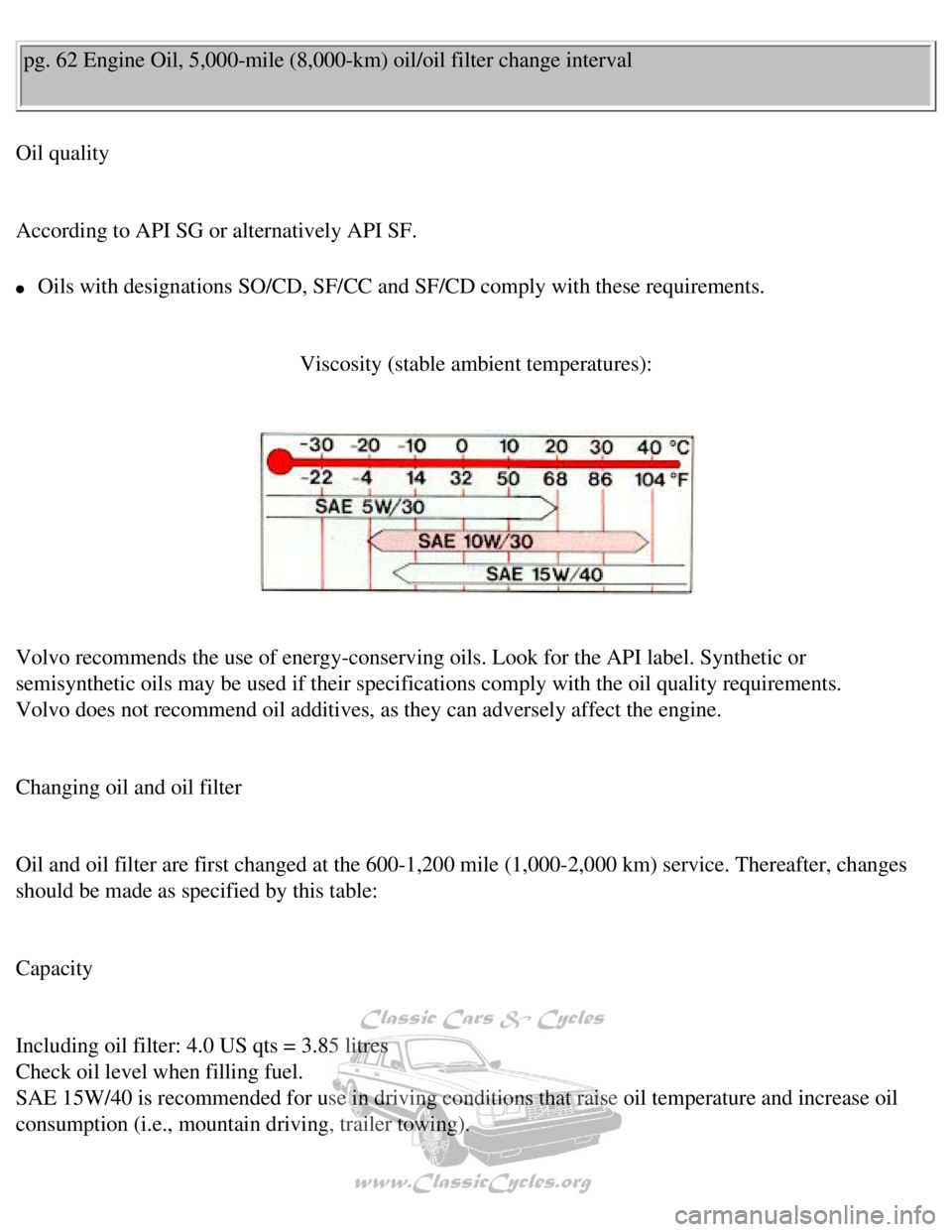Page 78 of 143

Volvo 1990 240 Model
1 Data plate
2 Oil filler cap, engine
3 Oil dipstick, engine
4 Brake fluid reservoir
5 Washer fluid reservoir
6 Expansion tank, coolant
7 Battery
8 Oil reservoir, power steering
9 Fuse, engine control pg. 60 Fuel requirements
Unleaded Fuel
Each Volvo has a catalytic converter and must use only unleaded gasoline\
(as specified on the
instrument panel and by a label near the filter inlet). U.S. and Canadi\
an regulations require that pumps
delivering unleaded gasoline be labeled "UNLEADED". Only these pumps hav\
e nozzles which fit your
car's filler inlet. It is unlawful to dispense leaded fuel into a vehicl\
e labelled "unleaded gasoline only".
Leaded gasoline damages the catalytic converter and the oxygen sensor sy\
stem. Repeated use of leaded
gasoline will lessen the effectiveness of the emission control system an\
d could result in loss of emission
warranty coverage. State and local vehicle inspection programs will make\
detection of misfueling easier,
possibly resulting in emission test failure for misfueled vehicles.
Octane Rating
Volvo recommends the use of premium unleaded gasoline with an (R+M)/2 \
rating of 91. This is
generally equivalent to a Research Octane Number (RON) of 95 or higher\
.
Deposit Control Gasolines
Volvo recommends the use of gasolines that contain "Deposit Control" add\
itives. These additives are
specially formulated to prevent the build up of certain injector and int\
ake system deposits. Fuels
containing "Deposit Control" additives are usually advertised as contain\
ing them and may have
additional claims to "clean injectors and intake valves" or similar word\
ing.
file:///K|/ownersdocs/1990/1990_240/90240_13.htm (2 of 9)12/30/2006 8:\
25:08 AM
Page 79 of 143

Volvo 1990 240 Model
If it is not clear whether the fuel contains such additives, ask the sta\
tion operator for further information
regarding the detergency of their gasolines.
Gasoline Containing Alcohol
Some fuel suppliers sell gasoline containing alcohol without advertising\
the presence of alcohol. If you
are not sure whether there is alcohol in the gasoline you buy, check wit\
h the service station operator.
Blends of unleaded gasoline and ethanol (ethyl alcohol, grain alcohol)\
, sometimes called "gasohol", are
available in some areas. Gasohol, if used, must contain no more than 10 \
percent ethanol and must have
an (R+M)/2 rating of 87 or higher. If you experience problems with sta\
rting, drive ability, or fuel
economy with gasohol, you should discontinue its use.
Take care not to spill gasoline during refueling. Gasolines containing a\
lcohol can cause damage to
painted surfaces, which may not be covered under the New Vehicle Limited\
Warranty.
Caution:
Do not use gasolines containing methanol (methyl alcohol, wood alcohol)\
. This practice can result in
vehicle performance deterioration and can damage critical parts in the f\
uel system. Such damage may
not be covered under the New Vehicle Warranty.
Fuel Tank
The fuel tank is designed to hold approx. 15.8 US gal. (60 liters), wi\
th sufficient volume left over to
accommodate possible expansion of the fuel in hot weather.
Be aware that the "usable" tank capacity will be somewhat less than the \
15.8-US gal. (60-liter)
maximum. When the fuel level is low, such factors as ambient temperature\
, the fuel's "vapor pressure"
characteristics, and terrain can affect the fuel pumps' ability to suppl\
y the engine with an adequate
supply of fuel. Therefore, it is advisable to refuel as soon as possible\
when the needle nears the red zone.
After the needle enters the red zone, you should be able to drive approx\
. 25 miles (40 km) depending on
driving style and conditions.
pg. 61 Engine fluids
file:///K|/ownersdocs/1990/1990_240/90240_13.htm (3 of 9)12/30/2006 8:\
25:08 AM
Page 82 of 143

Volvo 1990 240 Model
pg. 62 Engine Oil, 5,000-mile (8,000-km) oil/oil filter change interva\
l
Oil quality
According to API SG or alternatively API SF.
l Oils with designations SO/CD, SF/CC and SF/CD comply with these requirem\
ents.
Viscosity (stable ambient temperatures):
Volvo recommends the use of energy-conserving oils. Look for the API lab\
el. Synthetic or
semisynthetic oils may be used if their specifications comply with the o\
il quality requirements.
Volvo does not recommend oil additives, as they can adversely affect the\
engine.
Changing oil and oil filter
Oil and oil filter are first changed at the 600-1,200 mile (1,000-2,000\
km) service. Thereafter, changes
should be made as specified by this table:
Capacity
Including oil filter: 4.0 US qts = 3.85 litres
Check oil level when filling fuel.
SAE 15W/40 is recommended for use in driving conditions that raise oil t\
emperature and increase oil
consumption (i.e., mountain driving, trailer towing).
file:///K|/ownersdocs/1990/1990_240/90240_13.htm (6 of 9)12/30/2006 8:\
25:08 AM